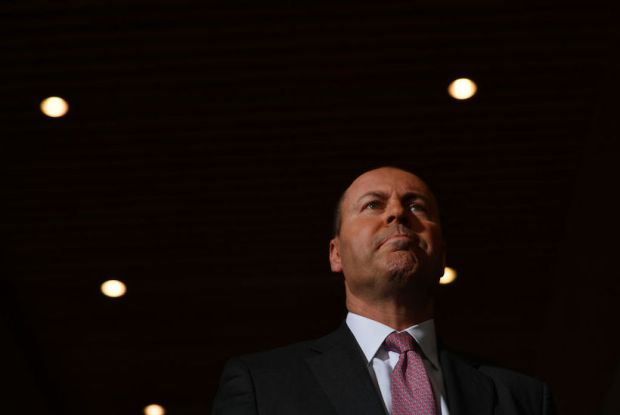I contend that for a nation to try to tax itself into prosperity is like a man standing in a bucket trying to lift himself up by the handle. — Winston Churchill.
If ever a tax could be compared with the handle of Churchill’s bucket, it would have to be stamp duty.
Like the handle it was designed with a purpose, but for the man in the bucket — read homebuyers — it fails to deliver.
Of course, it delivers for governments, making up over 10 per cent of revenues for the state and territory coffers, but it seriously fails the people who pay it.
It locks people out of housing choices, it creates a huge hurdle for those saving to buy and adds tens of thousands in mortgage repayments.
Former Telstra boss, David Thoday, will deliver a report to NSW Treasurer Dominic Perrottet this week — and will get a sympathetic ear when he proposes the urgent need for tax reform and the removal of stamp duty.
Perrottet himself is on the record calling stamp duty inefficient and on top of his agenda for abolition.
Reform is not about increasing or decreasing taxes. It’s about change for the better for the times, and we face very different times out of the COVID-19 crisis.
With economic costs expected to run into the hundreds of billions, our economy is not just ripe, but in urgent need of tax reform to pay down the debt.
More than a decade has passed since former Treasury Head, Ken Henry, made the call to abolish the draconian stamp duty, yet hardly anything has been done.
Stamp duty needs to be abolished for three reasons.
It’s inefficient, unfair and a volatile form of taxation. And besides, there’s an obvious and fairer replacement; a broad-based land tax.
New South Wales Treasury estimates that stamp duties comprise around 45 per cent of the total cost of moving house.
This results in people owning houses who do not place the highest value on them, such as empty nesters.
The Australian Bureau of Statistics found 49 per cent of Australians are living in “under-utilised” dwellings, in houses with two or more spare bedrooms.
The current tax model incentivises people against ‘right-sizing’ their home once children grow up and fly the coop to avoid tax on moving.
Stamp duty has made homeownership prohibitive for too many young Australians — representing over 25 per cent of upfront costs for buyers. This is pricing young Australians out of the property market.
A CoreLogic survey found 44 per cent of first home buyers believe stamp duty is a significant barrier to ownership.
In the past 10 years alone, homeownership rates for 25-34 year olds have slipped from 60 per cent to 48 per cent with no sign of improvement.
The perverse reality is that despite all of stamp duties shortcomings, most governments still heavily rely heavily on it to balance their budgets.
The Grattan Institute found New South Wales to have the least efficient tax bases of all the states and territories.
A large part of its inefficiency is the volatility and uncertainty of stamp duty due to fluctuations in the property market.
Between 2000 and 2011, annual receipts for stamp duty in New South Wales fluctuated between -37.6 per cent and +36.7 per cent on an annualised basis.
Stamp duty makes for a great revenue raiser while the markets are on the way up but falls off a cliff when the property market enters a slump.
In 2018 the NSW state government had to decrease its revenue forecast by $8 billion due to an unforeseen change in the Sydney property market.
Switching to a revenue model where a flat tax is collected on land values each year, in place of a hefty once-off stamp duty collection would be a better way to forecast state finances.
A broad-based land tax model could enable better forecast spending on public infrastructure such as schools and hospitals due to a higher degree of confidence on the states future expected cash flows.
The solution is theoretically simple but politically difficult. Homebuyers could opt to pay a discounted stamp duty fee upfront, or opt-in to a flat annual fee based on the unimproved value of their land.
Owners who have already paid stamp duty would be grandfathered to avoid paying double taxation under the proposed arrangement.
A low-rate of $5 for every $1000 of unimproved land value in New South Wales would equate to $9 billion for the state government every year — enough to fund the abolition of stamp duty in the medium term.
This model provides an opportunity for homebuyers to forgo the upfront cost of stamp duty, enabling people to opt into a smoother, less cumbersome tax model for market entrants.
Contrary to the historical lack of popularity due to anticipated political backlash, the average punter prefers a broad-based land tax model. Some 87 per cent of baby boomers and 72 per cent of millennials support replacing stamp duty with a broad-based land tax.
In my home state of NSW, Perrotett said it himself, “there is no better time to rid the states of inefficient taxes that hold back economic growth.”
Hopefully, his colleagues will agree it’s time to get out of the bucket and replace the handle.
Bradley McHugh is an economist and policy wonk by trade. The views expressed here are his own.

























